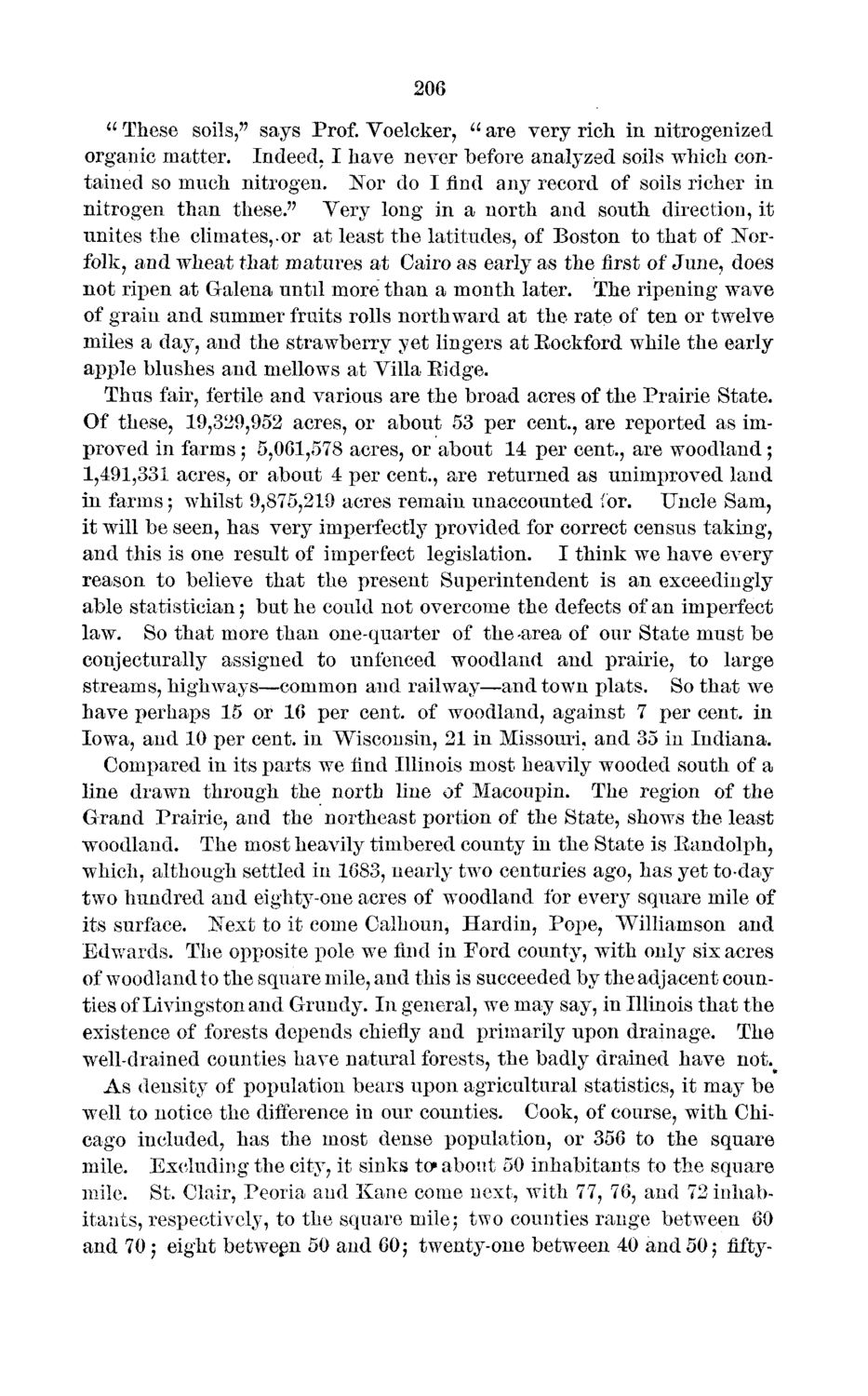| |
| |
Caption: Board of Trustees Minutes - 1873
This is a reduced-resolution page image for fast online browsing.

EXTRACTED TEXT FROM PAGE:
206 " These soils," says Prof. Yoelcker, " are very rich in nitrogenized organic matter. Indeed, I have never before analyzed soils which contained so much nitrogen. Nor do I find any record of soils richer in nitrogen than these." Yery long in a north and south direction, it unites the climates,.or at least the latitudes, of Boston to that of Norfolk, and wheat that matures at Cairo as early as the first of June, does not ripen at Galena until more than a month later. The ripening wave of grain and summer fruits rolls northward at the rate of ten or twelve miles a day, and the strawberry yet lingers at Eockford while the early apple blushes and mellows at Yilla Eidge. Thus fair, fertile and various are the broad acres of the Prairie State. Of these, 19,329,952 acres, or about 53 per cent., are reported as improved in farms; 5,061,578 acres, or about 14 per cent., are woodland; 1,491,331 acres, or about 4 per cent., are returned as unimproved land in farms; whilst 9,875,219 acres remain unaccounted for. Uncle Sam, it will be seen, has very imperfectly provided for correct census taking, and this is one result of imperfect legislation. I think we have every reason to believe that the present Superintendent is an exceedingly able statistician 5 but he could not overcome the defects of an imperfect law. So that more than one-quarter of the-area of our State must be conjecturally assigned to unfenced woodland and prairie, to large streams, highways—common and railway—and town plats. So that we have perhaps 15 or 16 per cent, of woodland, against 7 per cent, in Iowa, and 10 per cent, in Wisconsin, 21 in Missouri, and 35 in Indiana. Compared in its parts we find Illinois most heavily wooded south of a line drawn through the north line of Macoupin. The region of the Grand Prairie, and the northeast portion of the State, show's the least woodland. The most heavily timbered county in the State is Eandolph, which, although settled in 1683, nearly two centuries ago, has yet to-day two hundred and eighty-one acres of woodland for every square mile of its surface. Next to it come Calhoun, Hardin, Pope, Williamson and Edwards. The opposite pole we find in Ford county, with only six acres of woodland to the square mile, and this is succeeded by the adjacent counties of Livingston and Grundy. In general, we may say, in Illinois that the existence of forests depends chiefly and primarily upon drainage. The well-drained counties have natural forests, the badly drained have not% As density of population bears upon agricultural statistics, it may be well to notice the difference in our counties. Cook, of course, with Chicago included, has the most dense population, or 356 to the square mile. Excluding the city, it sinks to* about 50 inhabitants to the square mile. St. Clair, Peoria and Kane come next, with 77, 76, and 72 inhabitants, respectively, to the square mile; two counties range between 60 and 70$ eight between 50 and 60; twenty-one between 40 and 50; fifty-
| |